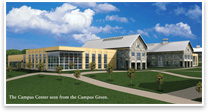 Biophilic Design Connects Humans with Nature Biophilic Design Connects Humans with Nature
Humans crave nature in the design of their buildings. So much so, says Yale professor Dr. Stephen R. Kellert, that “buildings deficient in facilitating the positive experience of nature hypothetically result in diminished human functioning, whereas facilities possessing biophilic features foster higher levels of human health and productivity.” These biophilic design features, Kellert notes, are the “direct, indirect, or symbolic occurrence in the built environment of the human affinity for nature.” 
 At Episcopal Academy, Even the Halls and Walls Will Be a New Edition At Episcopal Academy, Even the Halls and Walls Will Be a New Edition
A school’s break with the past calls for a rare collaboration
Pennsylvania’s Episcopal Academy is moving to a new 123-acre site in Delaware County after outgrowing its current campus. The school hired four prominent architecture firms to design it. Though each set of buildings differs in form, they are coordinated through common elements in landscape, materials, and scale. 
 Brownfields Practice Guides Now Available Brownfields Practice Guides Now Available
The Institute of Brownfields Professionals announced on July 18 that a series of Practice Guides produced by the Center for Environmental Policy and Management at the University of Louisville is now available and ready to be downloaded free of charge. The guides are intended to provide clear, practical advice to urban and regional planners and policymakers about the redevelopment of brownfields.

|



